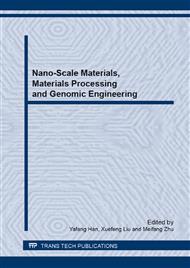p.466
p.471
p.477
p.489
p.495
p.501
p.507
p.513
p.518
Electrochemical Impedance Spectroscopy (EIS) Study of Nano-Composite Polyurea Coating under the Wet-Dry Cyclic Conditions
Abstract:
The polyurea was modified by adding different amounts of nanometer ZnO. The corrosion behavior of polyurea/primer composite coating system in wet-dry cyclic environment of 3.5% NaCl solution was studied by using the Electrochemical Impedance Spectroscopy (EIS) measurement and adhesion test technology. The experimental result showed that, different mass fractions of nanometer ZnO had different influences on the corrosion resistance property of coating. When the mass fraction of nanometer ZnO was 5%, the composite coating had the largest protective action. The corrosion resistance property of nanometer ZnO can be improved by increasing the density of polyurea coating, however, the corrosion resistance property of polyurea coating will be weakened in case of exceeding the critical adding amount.
Info:
Periodical:
Pages:
495-500
Citation:
Online since:
April 2014
Authors:
Keywords:
Price:
Сopyright:
© 2014 Trans Tech Publications Ltd. All Rights Reserved
Share:
Citation:


